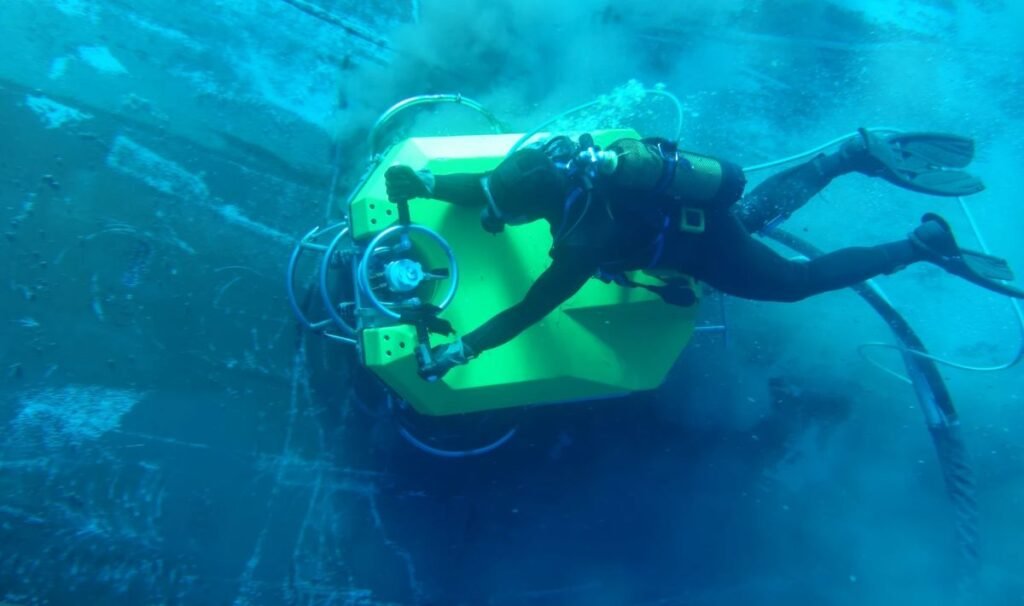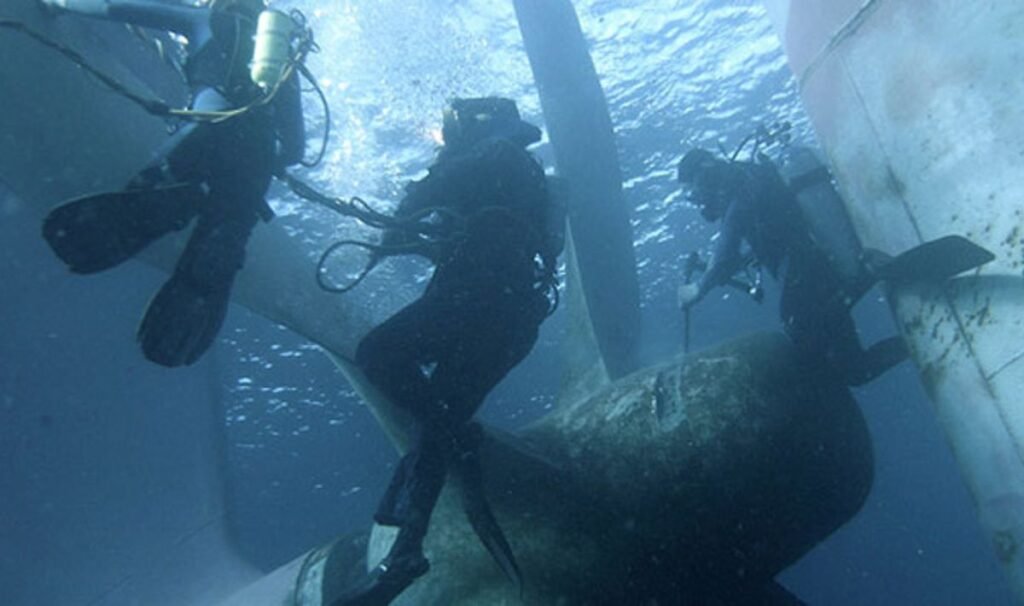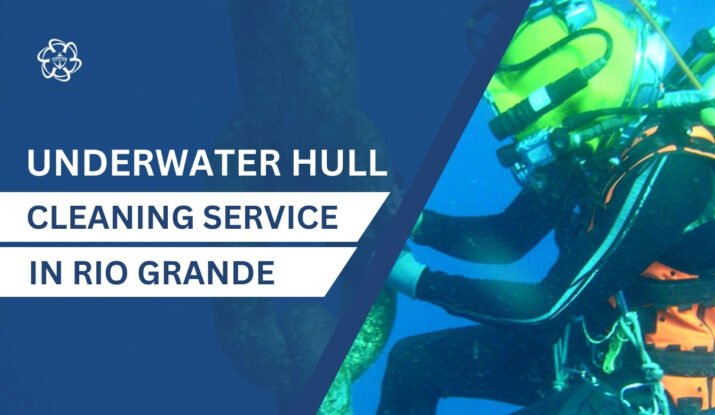Underwater Hull Cleaning in Rio Grande: The Ultimate Guide
Picture your ship slicing through the waters off Rio Grande, agile and efficient, not a trace of sluggishness to slow you down. Sounds ideal? Truth is, every vessel starts this way—but it doesn’t last forever. Nature has other plans. That’s why savvy ship owners swear by underwater hull cleaning in Rio Grande.
We’re about to embark on a deep dive into this crucial topic. By the end, you’ll understand why it’s a must—how it works, how to choose a provider, and how to keep your bottom line (and your hull) in peak condition.
Why is Critical Underwater Hull Cleaning in Rio Grande
Let’s cut to the chase: Rio Grande’s waters are a hotbed for marine growth. Barnacles, algae, tube worms—they all love to cling to ships, transforming once-sleek hulls into drag magnets. The result? Higher fuel consumption, more emissions, and poorer performance. Sooner or later, you’ll also face penalties for biosecurity breaches or fall short of environmental regulations.
If you’re running bulk carriers, offshore platforms, or container ships in Brazil, underwater hull cleaning in Rio Grande isn’t a luxury—it’s a necessity. It’s your vessel’s equivalent of a pit stop for a racecar.
The Unique Marine Environment of the Rio Grande
What makes Rio Grande different? It’s a commercial hub and a gateway to Brazil’s southern coast. The mixing of fresh and saltwater, combined with heavy port traffic, means biofouling happens fast and stays stubborn. Invasive species, like the notorious sun coral, are a growing concern. Not only do they slow you down, but they also introduce ecological risks and headaches for ship operators.
Due to this high-risk environment, hull cleaning services in Rio Grande have evolved to tackle both operational and environmental challenges head-on.

What Is Biofouling—and Why Is It Such a Problem Here?
Think of biofouling as a layer cake of slime, barnacles, and sometimes invasive corals that accumulates on your hull. Over time, this build-up creates turbulence, more drag, and a literal barrier between your ship and smooth sailing. Even a thin layer of slime can spike fuel use by several percentage points, while a barnacle-encrusted hull can make moving through water feel like wading through syrup.
Why is Rio Grande especially prone? The conditions are perfect for marine hitchhikers: thriving commerce, varied salinity, and a bustling port environment. From barnacles to sun coral, these organisms waste no time colonizing hulls.
How Underwater Hull Cleaning in Rio Grande Works
You may wonder—do you need to dry-dock every time marine growth gets stubborn? Not at all! The beauty of underwater hull cleaning in Rio Grande is that it happens right where your vessel floats.
Professional Diving Teams and ROV Technology
Most cleaning is done by experienced professional divers, armed with brushes, scrapers, and sometimes ROVs (remotely operated vehicles) for larger or hard-to-reach areas. Divers manually remove the growth, while ROVs handle wider sweeps, especially during emergency inspections or for deep-draught vessels.
Safe and Sustainable Cleaning Practices
Today, there’s a big spotlight on sustainability. The latest cleaning methods focus not just on results, but on minimizing environmental impact—containing biological debris, following strict protocols, and reporting to authorities as required. Divers and robotic solutions are trained to avoid harming anti-fouling paint and prevent pollutants from entering sensitive port ecosystems.
Major Benefits of Regular Underwater Hull Cleaning in Rio Grande
Why stick to a schedule? Regular underwater hull cleaning in Rio Grande pays off—here’s how:
Boosting Fuel Efficiency and Vessel Performance
- A clean hull glides. That means up to 10–25% savings on fuel over a year, according to global and local studies.
- Fast response and improved maneuverability, even in strong port currents or challenging Atlantic swells.
Enhancing Sustainability and Compliance
- Lower emissions keep you in line with international and Brazilian regulations.
- Biosecurity compliance protects coastal waters from invasive species, especially given new rules across Brazilian ports.
When Should You Schedule Underwater Hull Cleaning in Rio Grande?
Short answer: Don’t wait for trouble. Here’s when you should act:
- Every 6 to 12 months is the sweet spot for most ships in the Rio Grande.
- Before international voyages. This prevents exporting invasive species and ensures faster port clearance.
- When fuel consumption spikes unexpectedly, or performance drops.
- After lengthy layovers or anchorage periods.
Hull Cleaning Services Available in Rio Grande
If you need underwater hull cleaning in Rio Grande, you’ll find a robust network of providers offering:
Inspection & Reporting
First comes assessment. Divers perform a visual and video inspection, checking everything from rudders to thrusters. Detailed daily inspection reports and hull cleaning cycles are tracked, so you always know your hull’s health.
Repair Solutions and Extra Services
Some hull cleaning companies offer more than a scrub. Look for teams that can do underwater welding, minor repairs, anode replacement, or even emergency patching—all certified and safely executed.
Selecting the Best Provider in Underwater Hull Cleaning in Rio Grande
You want reliability, safety, and a team that knows the ropes. Here’s what to prioritize:
Work with providers familiar with both local port regulations and national standards set by major authorities like Porto de Santos. Their experience ensures full compliance, efficient operations, and environmentally responsible cleaning every time.
What to Look For: Safety, Standards, and Local Know-How
- Years of underwater expertise (aim for teams with 10+ years in Brazilian waters).
- Compliance with international and Brazilian standards, especially for safety and environmental regulations like those outlined by the International Maritime Organization (IMO).
- Full reporting and transparency—daily reports, video evidence, and certification.
- Emergency responsiveness—some offer 24/7 services for sudden biofouling or urgent repairs.
Step-by-Step: The Underwater Hull Cleaning in Rio GrandeJourney
Curious what the whole process looks like? Here’s your map:
Initial Assessment & Preparation
- The initial survey, both above and below the waterline, to map marine growth.
- Permit organization and compliance checks (especially important with ever-evolving port and environmental rules).
- Safety brief and site prep.
Execution and Final Review
- Divers/ROVs remove the fouling layer by layer, working methodically to avoid paint damage and minimize pollutant release.
- If needed, biofouling is captured and disposed of safely.
- Final inspection—complete with visuals, reports, and maintenance advice for optimal hull longevity.

Common Challenges and Pro Tips
Every port throws its curveballs. In Rio Grande, expect:
- Murky water or strong currents—local short-period storms and river outflows can affect visibility and safety, so flexibility is a must.
- The rapid growth of invasive species like sun coral requires specific removal protocols and sometimes extra time.
- Port access restrictions may dictate timing and cleaning method—choose a provider with local regulatory expertise.
Pro tip: Schedule cleaning between busy port windows, and always ask for a full post-cleaning report—good documentation is your best insurance.
Making the Most of Your Investment
A gleaming hull is just the start. To maximize benefits:
- Adopt a cleaning and inspection routine. Prevention beats reaction every time.
- Bundle services with inspections or minor repairs—many providers offer deals.
- Educate your crew about the early signs of biofouling so you can act fast.
Conclusion: Clean Hulls, Strong Returns in the Rio Grande
If you’re navigating Rio Grande’s bustling marine scene, make underwater hull cleaning your closest ally. With regular attention, you’ll reap tangible savings, improved safety, and less downtime, not to mention staying on the right side of environmental law. Leading local providers combine skilled divers, cutting-edge tools, and sustainability know-how, offering your ship a new lease of life.
Ready to experience the benefits of underwater hull cleaning in the Rio Grande? Let’s keep your fleet—and your business—moving forward, one smooth voyage at a time.
FAQ:
Q1. How often should I book underwater hull cleaning in Rio Grande?
For most commercial vessels, cleaning every 6 to 12 months is advised, given the rapid fouling rates in the area.


